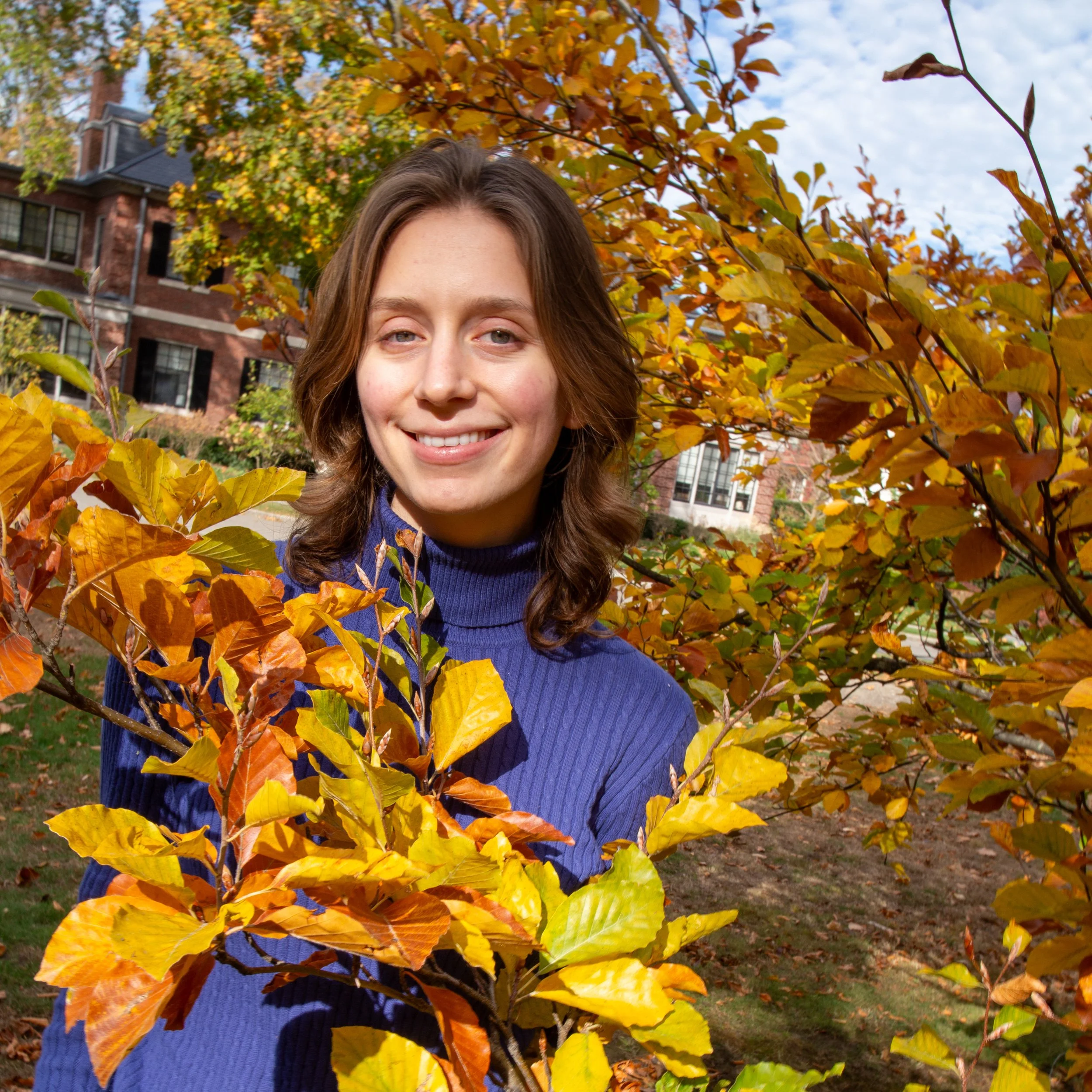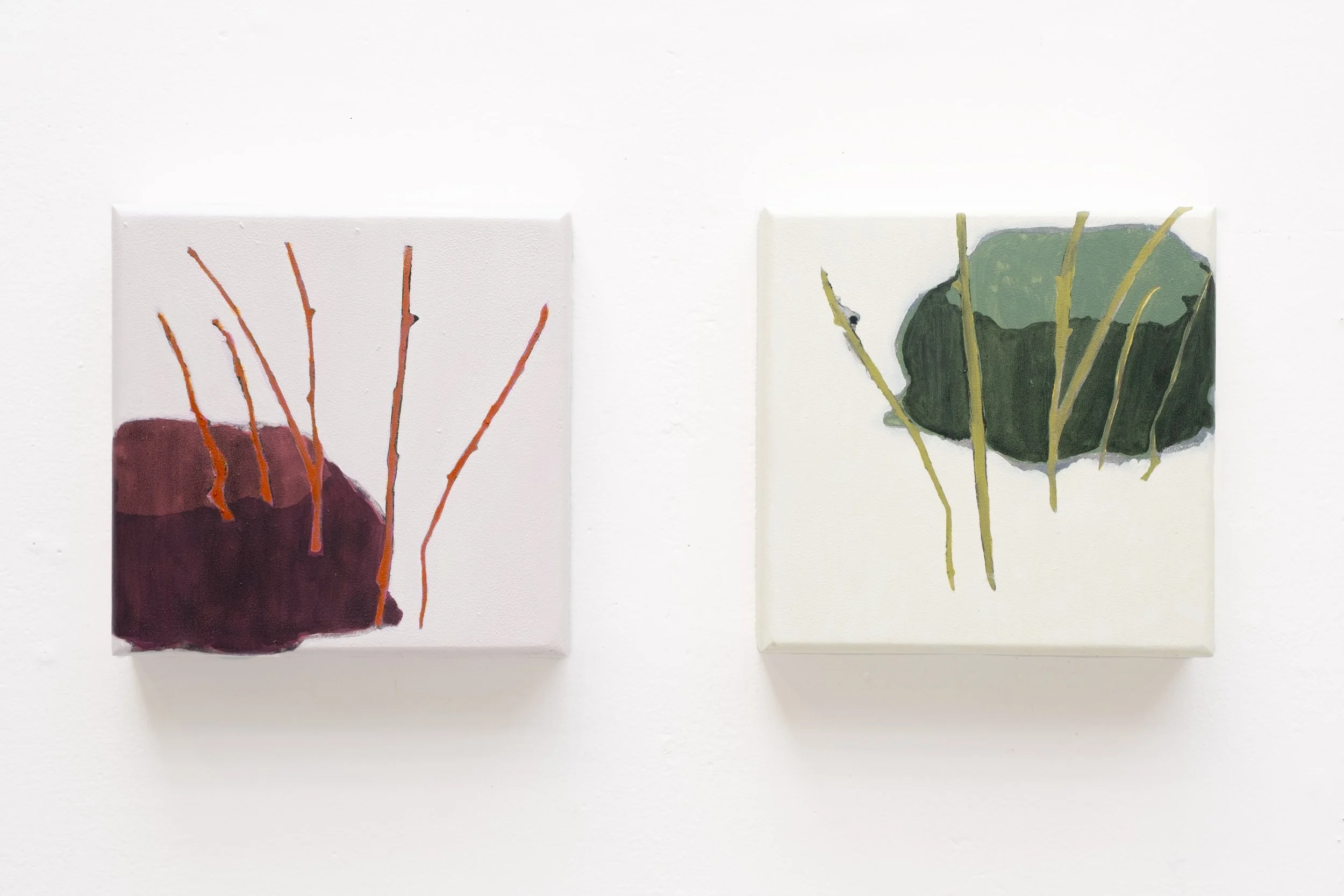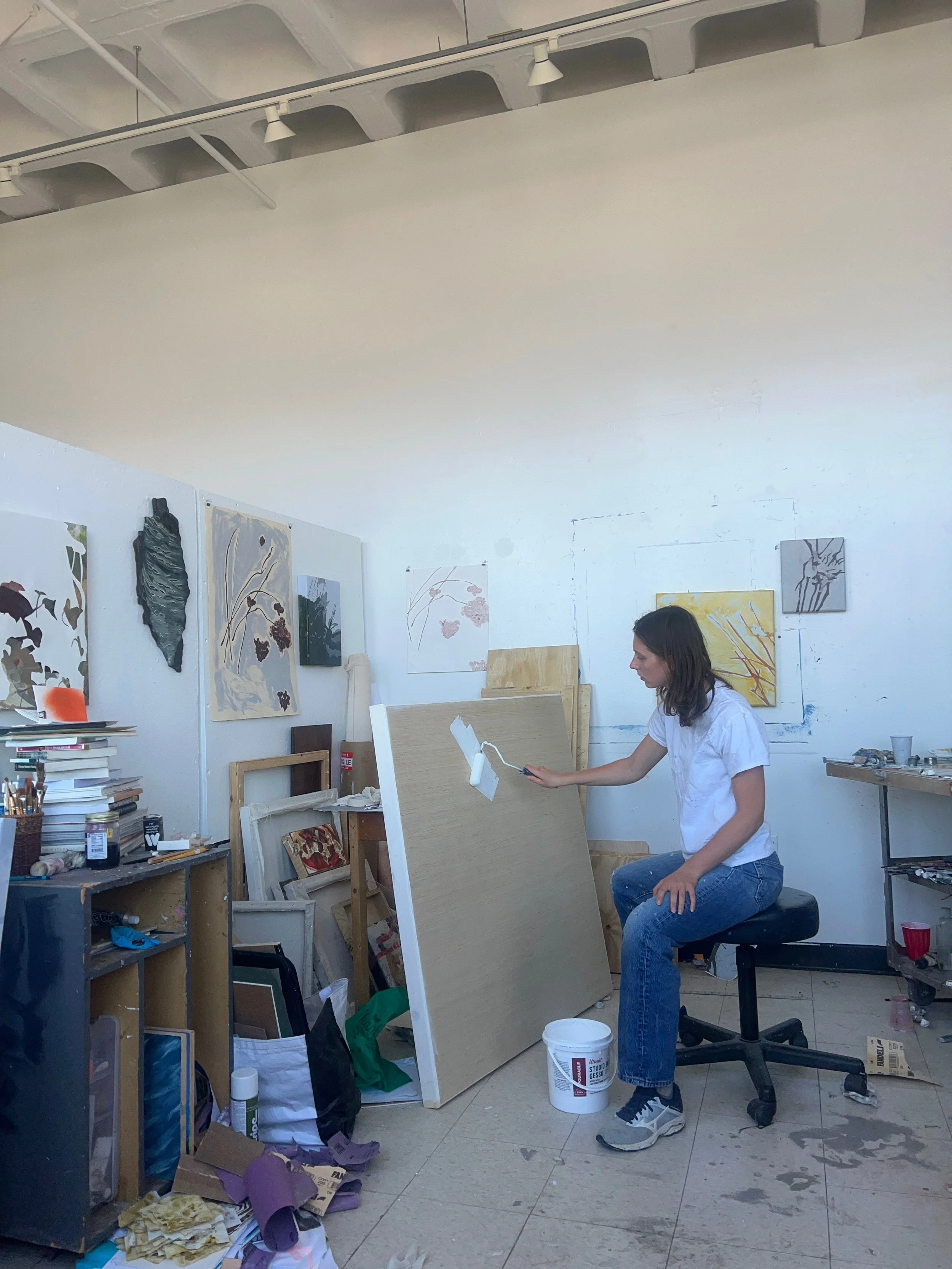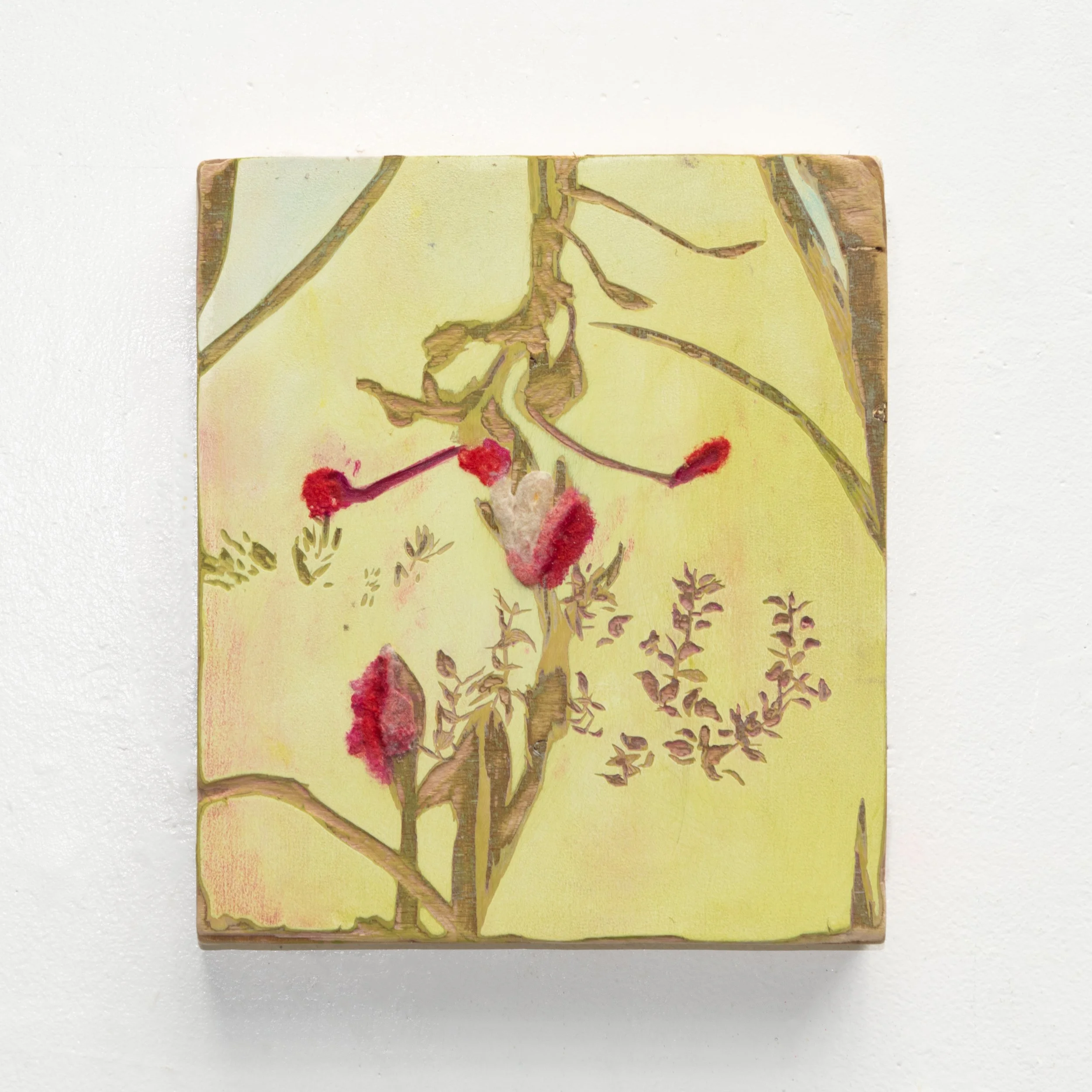Painting with Purpose: Lauren Boysa on Art, Sustainability, and Finding Community
Photograph of Lauren Boysa
Tell me a little about yourself?
My name is Lauren Boysa, and I will graduate from Boston University in May 2025 with a BFA in Painting and a BA in History of Art and Architecture. Originally from Wisconsin, I have been passionate about painting my entire life. My studio practice explores the intersection of environmental themes and painting, a focus that has become especially prominent in my recent work with the CFA Color Garden.
As a current Boston University Senior studying fine art what is the largest aspect of your practice that has shifted in your time at BU?
One of the key aspects of the BU painting program is our shared studio spaces, where we work closely alongside one another. This environment has had a significant impact on my art practice, encouraging me to consider the role of viewers and engagement in my work. Being able to regularly share my paintings with peers has reinforced the idea that my work is meant to be experienced and discussed. This ties into the environmental themes present in my paintings—I aim to create a space for conversation, where the artwork prompts reflection and connection to the surrounding environment.
“Knotweed (warm)” and “Knotweed”, oil on panel, ea. 7” x 7” (diptych)
You were recently in a show titled We Love You, where you showed amongst your two of peers at Boston University, what would you say was the most impactful part of that experience?
One of the most memorable days of my life was installing that show because I was doing it alongside two of my closest friends, whom I’ve been painting with for four years. I knew going into it that it would be both fun and challenging—a rigorous experience that would push me to grow—and it turned out to be exactly that.
One unexpected takeaway was how much I found myself comparing our work, not just in terms of individual pieces but in what the show as a whole was offering. I noticed that the strongest moments of the exhibition didn’t always include my work, which made me reflect on how I could incorporate those impactful elements into my own practice. For example, I’ve been hesitant to scale up my paintings, but after seeing the size of my peers' work, I want to be part of that conversation.
Another major influence was the textual component of the show. Collaboratively writing about our work made me rethink how text functions in an exhibition—not as a direct explanation, but as an extension of the artwork itself.
When your starting a new piece of art what does that look like?
Boysa in her studio
While my paintings are created in the studio, the process begins outside. The subjects in my work come from what I observe and experience in the natural world—mostly during my daily walks to class, work, and other routines. I take note of fleeting moments: the color of a flower, the shape of twigs in the snow, or the way light falls on the grass. These encounters remind me of my connection to the world’s larger ecosystem, and I hope that by translating them into paintings, viewers will recall their own experiences in nature.
To preserve these moments, I document them through memory, sketches, or quick photos on my phone. Back in the studio, I reinterpret these references, drawing, cutting, or layering fluid washes to simplify and expand on the forms that initially caught my attention. Once I have a general composition, I mix my color palette—a crucial step in my process. If I took a photo, I reference it, but I also reflect on how the colors felt in the moment, ensuring they translate accurately in my work.
Before painting, I build a wooden panel in the woodshop, often using reclaimed materials in line with my environmental practices. I construct cradled panels, then begin painting, initially referencing my documentation before shifting toward a more intuitive, gestural approach.
Your practice feeds a lot from your passion for the environment. There is a lot of controversy surrounding paint and the environmentally impactful effects of it. How have you approached this dilemma?
This is a complex issue. I primarily use oil paint for its rich pigment, color depth, and archival quality. I want my work to last—to be shared over time—so oil paint remains the most suitable medium for now. That said, I’ve recently started incorporating natural materials into my practice.
Over the past year, my peers and I have collaborated on the Color Garden, harvesting flowers to create natural dyes for art and painting. While I’m not yet able to rely solely on natural materials due to accessibility, I hope the Color Garden will continue providing dyes for art students. It’s important to me to use reclaimed materials whenever possible and to take advantage of the Color Garden’s resources while I still have access to them as a student.
Lauren, you have done a lot at your time as an undergraduate student at Boston University, one of achievements within this time as been BU’s Color Garden. Can you tell us a little about the color garden?
The CFA Color Garden, launched in Winter 2024, is a unique green space on BU’s campus, filled with native, pollinator-friendly, and drought-tolerant plants. Beyond cultivation, the garden serves as a site for experimentation with natural pigments and dyes.
We host dye workshops to engage the broader BU community in the arts, along with seeding events and research shares to promote sustainability education. Additionally, we collaborate with the sciences, working with organizations like BU’s Earth House to further interdisciplinary connections.
Not only do you have experience in creating work but you have also worked in galleries as well, how do you process that artwork is also a commodity as an artist?
I've been working in the gallery system for almost a year as a gallery coordinator in SoWa, and meeting the artists we represent has significantly shaped my understanding of the art market. These artists approach their work with deep intention, fully engaging with contemporary art discourse. Yet, their work exists within a gallery—a space that must also function as a business.
What stands out to me is that these artworks, crafted with care, precision, and love, ultimately find homes where they develop an intimate relationship with their collectors. This feels like an extension of the creative process—another stage in the cycle of making art.
In my own practice, the most fulfilling moments come when someone engages with my work, starts a conversation about it, and forms a connection. If I can sell a piece to someone who will live with it—recalling memories, experiences, or discussions inspired by it—it creates a reciprocal relationship. In that way, art not only becomes part of their environment but also keeps the larger themes I explore at the forefront of their mind.
With your current background in the art market, where do you see emerging artists being able to fit into this in the next year?
Callisia, Oil and flocking on panel, 10” x 12”
My friends and I, all painters studying at BU, have hosted gallery shows in our home in Brookline, MA. I believe that creating third spaces like these is essential for young artists to thrive. There's a growing scene of house shows in Allston, and I see real power in this alternative network as a space for emerging artists to connect and showcase their work.
Written by: Brooke Olson





